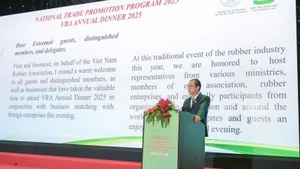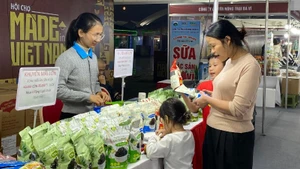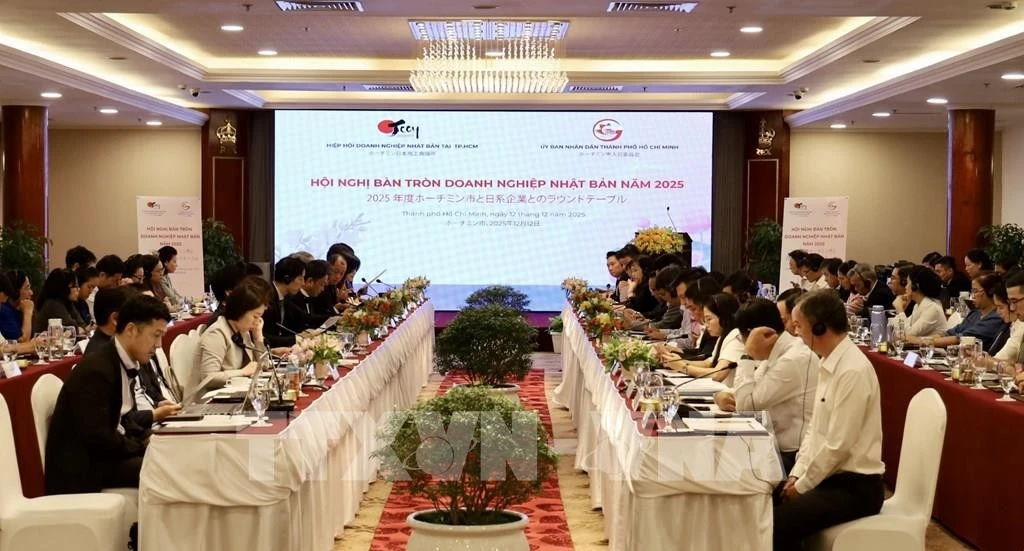Key factors driving this growth include enhanced market access to established destinations like China, Japan, and the European Union (EU), along with efforts to penetrate emerging markets such as the Middle East, Africa, and South Asia.
The proactive implementation of export promotion strategies and the negotiation of trade agreements have laid a strong foundation for Vietnamese agricultural products to thrive globally.
Ambitious goals for key products
The fruit and vegetable sector achieved remarkable growth in 2024, with export revenue hitting 7.12 billion USD, 27.1% higher or nearly 1.5 billion USD more than in 2023. For 2025, the sector has set a target of over 8 billion USD and is confidently eyeing 10 billion USD in the near future.
Nguyen Thanh Binh, President of the Vietnam Fruit and Vegetable Association, emphasised that Vietnam’s fruits and vegetables are exported to more than 60 countries. The industry is also expanding its portfolio of processed products, which account for an increasing share of exports.
Achieving this success is the result of a long-term effort, requiring years of investment in fruit cultivation. Key exports like durian, banana, and coconut have gained a strong foothold in the Chinese market, while other products are finding opportunities in high-value markets. Notably, Vietnam is negotiating with the US to approve fresh passion fruit exports, which are expected to begin in 2025.
The fisheries sector also experienced robust growth in 2024, with export revenue reaching 10.07 billion USD, a 12.2% increase from 2023. Looking ahead, the sector is targeting a 10-15% growth rate in 2025, aiming to surpass 11 billion USD.
Nguyen Hoai Nam, Deputy Secretary-General of the Vietnam Association of Seafood Exporters and Producers (VASEP), highlighted the government’s long-term strategy to achieve 14-16 billion USD in seafood exports by 2030. This vision includes developing Vietnam as a global leader in sustainable, high-tech seafood production. In 2025, exports of shrimp, pangasius, and other key products are expected to see significant growth, supported by favourable policies such as export financing programmes for forestry and fishery products.
In addition to fruits, vegetables and seafood, industrial crops such as coffee, pepper, and cashews are positioned for substantial growth. These products already belong to Vietnam’s “billion-dollar export club”. Coffee in particular stands out as the third-largest agricultural export, after fruits and rice, with revenue of 5.48 billion USD in 2024. Rising global demand and improved product quality provide a strong foundation for the sector to reach 6 billion USD in 2025.
Expanding and strengthening markets
Vietnamese agricultural products are well-positioned to capitalise on global trends in 2025. According to Nguyen Anh Phong, Deputy Director of the Institute of Policy and Strategy for Agriculture and Rural Development, the first quarter of 2025 is expected to see strong export performance. Global demand for food and agricultural products is rising due to disruptions in supply chains caused by armed conflicts and trade competition between major economies.
The US remains a key export market, thanks to its large population and high consumer demand for seafood, wood products, coffee, pepper, and fruits. In China, demand for fruits and seafood is projected to grow by a respective 6.64% and 7.56% annually between 2024 and 2029. Vietnam’s geographic proximity allows it to deliver fresh, high-quality products at competitive prices, providing a significant advantage amidst rising logistics costs. Furthermore, Vietnamese agricultural products are increasingly sold on Chinese e-commerce platforms such as TikTok, Taobao, and JD.com, opening new and effective trade channels.
The Middle East is another region with untapped potential for Vietnamese exports. Countries like Israel, Saudi Arabia, and the UAE are showing growing demand for seafood, fruits, and rice. Products like tuna and pangasius have significant opportunities to expand their market share, provided exporters meet Halal standards in production, processing, and transportation. Additionally, several Middle Eastern countries are actively investing in Vietnamese rice production to ensure stable supply.
While the outlook for 2025 is promising, achieving sustainable export growth requires strategic investments and policy support. Le Thanh Hoa, Deputy Director of the Department of Agricultural Product Quality, Processing, and Market Development, emphasised the importance of enhancing processing capacity, developing large-scale production zones, and building integrated supply chains. These efforts will help to ensure that Vietnamese agricultural products meet the stringent quality, environmental, and labour standards required by international markets.
Local authorities must also focus on training farmers and businesses to adopt green and organic farming practices. By improving awareness and skills, Vietnam can accelerate its transition to sustainable agriculture while meeting the growing demand for environmentally friendly products.
















